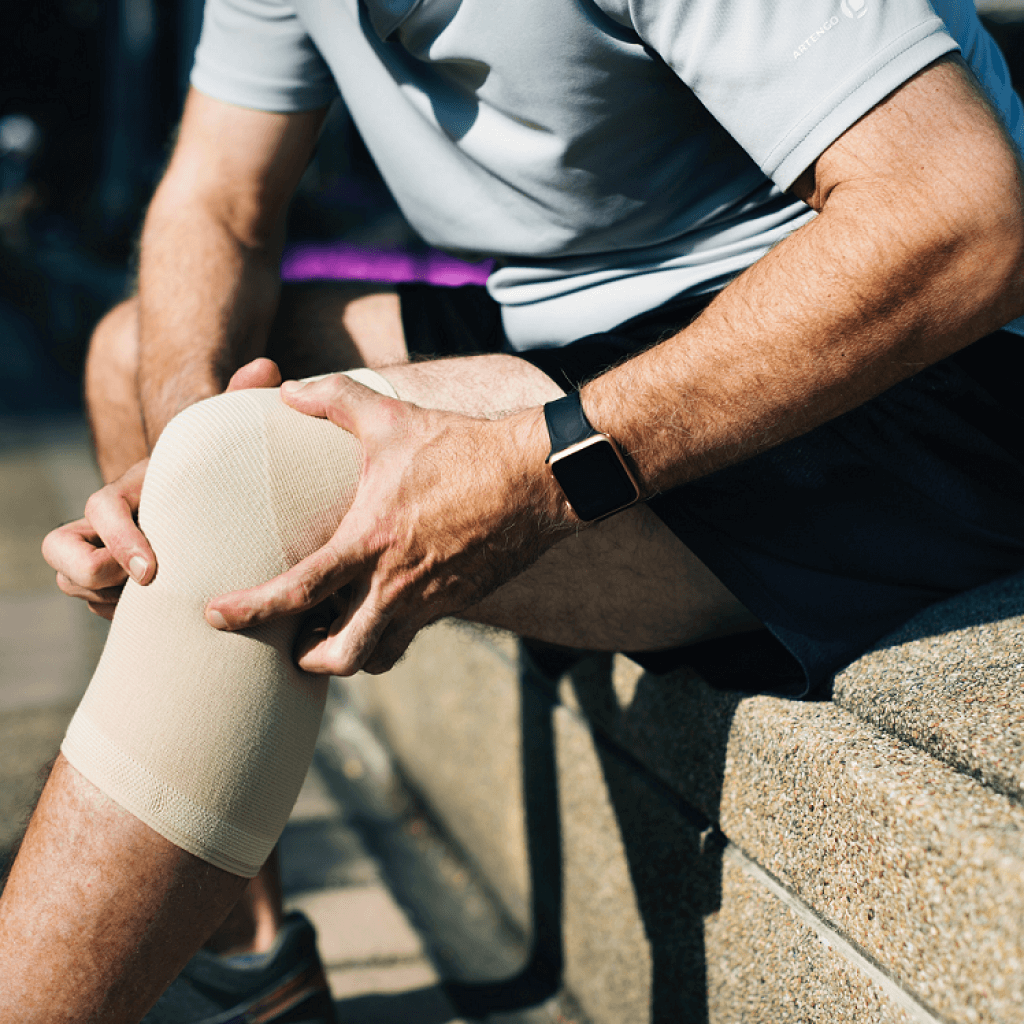Running Backward: Beneficial Or Detrimental To Training?

In June 2017, Zimbabwean-born Rastafarian beekeeper, Farai Chinomwe, completed the 89 km Comrades Marathon in South Africa for the fifth time. And while this, in itself, is an incredible feat, Chinomwe went one step further. From 2015 to 2017, he ran the Comrades Marathon backward to raise awareness for bee conservation. And no, he didn’t simply run the course from end to finish on these three occasions. He literally ran the race facing the wrong way.

Through this achievement, Chinomwe succeeded in fulfilling his ultimate goal: Raising awareness about a cause that is close to his heart. But in the process, he also drew attention to an often neglected training tool that, if used correctly, can benefit runners in a number of ways. Enter backward running.
The benefits of running backward
And for those who fear that you have to complete an ultra-marathon in reverse in order to reap any benefits, you can relax. According to coach Jenny Hadfield, backward running is, in fact, best used as “a condiment rather than a full entree when training”.
So what exactly are the benefits of including backward running in your training regime? Here are just a few:
1. It may reduce the risk of injury, and assist with injury rehab
Two separate studies, one published in Proceedings, Biological Sciences in 2011 and the other in the Journal of Biomechanics in 2012, found that backward running causes runners to land with less impact, thereby decreasing the risk of especially knee pain and -injuries.

But that’s not all. For runners who are already injured, Coach Hadfield says that backward running can form an effective part of a rehab strategy. “[Backward] running can be an effective strategy for rehabbing groin, knee joint, hamstring, shin, low back, and hip injuries, just to name a few. That is due in part to the differing demands when running backward versus forward, including a greater range of motion at the hip joint, a more erect posture, and greater activation of the calves and quadriceps muscles,” she explains.
2. It may assist with weight loss and -management
And if weight loss or -management is one of your running goals, you’ll be pleased to know that backward running may also help with that. In a study published in the International Journal of Sports Medicine in 2005, a research team from South Africa found that “backward walk/run training … causes significant changes in body composition in young women”. In fact, the training group of 13 young women who followed a six-week backward run/walk program as part of the study lost an average of 2.4% body fat and showed an average decrease of 19.7% in skinfold measurements when compared to the control group of 13 women who simply continued with their daily activities without following a structured exercise program.
Coach Hadfield reiterates these findings and confirms that backward running takes a lot more effort than normal running and therefore also burns more calories. So what are you waiting for?!
3. It can help address muscle imbalances
Since normal running can tend to over-develop the hamstrings, thereby increasing the risk of knee injuries, backward running can act as the perfect antidote. Postural rehabilitation specialist, Mitchell Phillips, concurs: “[Backward running] is the perfect remedy to help cure the frequent deficiency between anterior and posterior chain muscle groups – the hamstrings/calves and quads.” How? By switching up normal running with backward running, the body’s opposing muscles are forced to function like contracting muscles and vice versa. Which means that all in all, regular, clever backward running could contribute to an improved relationship between these muscle groups. Which, in turn, should improve your legs’ ability to deliver more power in a safe and effective manner.

4. It keeps things interesting
And if you’re stuck in a running rut and you can’t get out, try spicing things up with a little backward running. It’s sure to challenge both your body and mind in a whole new way, thereby jolting you out of running on autopilot. Just try it!
How to safely incorporate backward running into your training regime
But how should you go about to safely incorporate backward running into your training regime? Coach Hadfield recommends the following: “Start by adding two to four 30-second intervals of backward running at the end of your easy runs. As you progress, you can lengthen the time of each interval, add more intervals, and even incorporate them into your runs just like a speed work”.
And as far as technique goes, try keeping your shoulders in line with your feet and avoid swinging your arms too high or too far away from the body. Also, use the balls of your feet to push off from the ground and don’t lift your feet too high. Don’t be shy to enlist the help of a training partner to help you with your first few backward runs if you’re really nervous about taking the plunge.
Things to keep in mind
It does, of course, go without saying that backward running comes with its fair share of risks. For one, it’s rather tricky to see where you’re going while you’re doing it! So be sure to start off slowly on a track or other relatively straight, obstacle-free surface. You don’t want to fall into a pothole or bang into a lamp post on your first attempt!

Also, remember to heed Coach Hadfield’s advice regarding the quantity of backward running to include in your regime. It’s best used as a condiment to spice up your training, so don’t go switching up your total weekly mileage for backward miles. Use the guidelines above to gradually add short sections of backward running to some of your weekly runs in order to reap the best rewards.
And, last but not least, have fun with it! There’s nothing quite like greeting the frowns of confused onlookers with a cheery “hello!” and a smile as you cruise past them in reverse, knowing that you’re actually improving your running performance in the process!
Sources
- , Why running backwards is the way forward, Online publication
- , Running backwards: soft landing-hard takeoff, a less efficient rebound, Scientific journal
- , Patellofemoral joint compression forces in backward and forward running, Scientific journal
- , The effect of backward locomotion training on the body composition and cardiorespiratory fitness of young women, Scientific journal
- , The many bennies of running backward, Online publication
- , The backwards ultra-marathon Rastafarian beekeeper, Online publication
Latest Articles
 Is Running on a Treadmill Easier Than Running Outside?Runners have their own preferences, whether it is treadmill running, running outside on the road, or exploring trails. So...
Is Running on a Treadmill Easier Than Running Outside?Runners have their own preferences, whether it is treadmill running, running outside on the road, or exploring trails. So... Is It OK to Use Trail Running Shoes on the Road?While trail running shoes can be used on roads, especially in situations where a runner encounters mixed terrains or pref...
Is It OK to Use Trail Running Shoes on the Road?While trail running shoes can be used on roads, especially in situations where a runner encounters mixed terrains or pref... How to Fix Sore Quads After Running?Rest, ice, gentle stretching, and over-the-counter pain relievers can help soothe sore quads after running. Also, ensure ...
How to Fix Sore Quads After Running?Rest, ice, gentle stretching, and over-the-counter pain relievers can help soothe sore quads after running. Also, ensure ... 10 Fruits With The Most Electrolytes to Replace Sports DrinksThese fruits are high in electrolytes such as potassium, magnesium, and calcium, essential for hydration, muscle function...
10 Fruits With The Most Electrolytes to Replace Sports DrinksThese fruits are high in electrolytes such as potassium, magnesium, and calcium, essential for hydration, muscle function...

